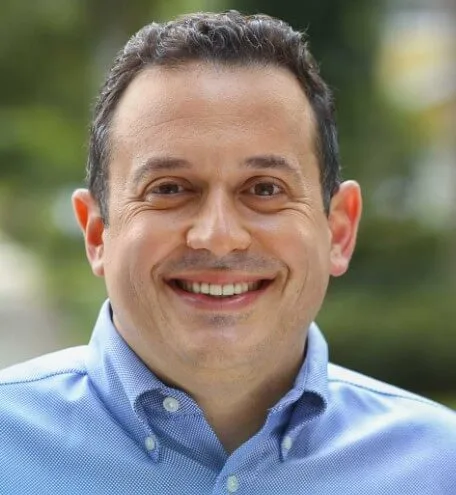
Image via Shuttershock
When a non-elected governor, like Wanda Vázquez, faces her first major health crisis, skepticism and the demand for accurate information during an emergency can go a long way.
We fact-checked the Puerto Rican government’s response and claims, now that the first cases have been officially confirmed.
Vázquez, former Secretary of Justice, was appointed after the controversial resignation of previous governor Ricardo Rosselló as the constitution stipulates.
Coronavirus has presented a whole new world of challenges for the islanders, especially because of the economic crisis Puerto Rico faces and the need for tourism to boost it. Here are some of the claims Vázquez’s have made to explain to people why the pandemic also arrived on the island but took weeks to be confirmed.
CLAIM #1: Testing That Takes Forever: Since the first suspected case of coronavirus was confirmed a week ago, the governor said that the test done on the patient would be sent to The Centers for Disease Control and Prevention (CDC), and the results would be ready within 24 to 48 hours. On the following days, Vázquez and Rafael Rodríguez Mercado, then secretary of the Public Health Department, said that they spoke with a representative of the CDC that was their response to the Puerto Rican officials in charge.
THE FACTS: Last Thursday, Vazquez emphatically said she would not tolerate such a delay from the CDC, calling it unacceptable after the results of the three firsts suspected cases took over two weeks to be sent back to P.R. On Friday, the CDC claimed that the samples were not sent to them “in the right condition and the documentation was inaccurate.” The CDC’s declarations pushed the government to announce that finally Puerto Rico was able to test locally, and in less than an hour, Vázquez confirmed that there were three positive cases on the island.
CLAIM #2: Cruise Ships Are More Than Welcome: When the cruise ship Costa Luminosa arrived with the first suspected case of coronavirus on March 8th, Vázquez said that she ordered the captain to report any suspicious cases before docking in San Juan, but the cruise company did not do it because allegedly, the woman didn’t have suspicious symptoms then. That Sunday, as the woman and her husband, were taken to a San Juan hospital, 96% of the passengers of the cruise ship debarked in Old San Juan, and spent the whole day in the historic city.
THE FACTS: Since February, the Cruise Lines International Association (CLIA), has been updating a prevention guideline that includes the report on suspected cases. The day that Costa Luminosa arrived, CLIA announced the adoption of additional enhanced screening measures in response to COVID-19, that included the conduction of illness screening for all persons who had traveled from, visited or transited the airports at the destinations listed on the CDC page. That practice was never enforced. Carla Campos, director of the Puerto Rico Tourism Company, went on board of the cruise ship, with three other employees, to give a commemorative plaque to the Captain. It was the first time Costa Luminosa docked in Old San Juan.
CLAIM #3: Coronavirus Is A Non-Threatening Virus: When the concern about COVID-19 increased amongst the international community in late January, Rodríguez Mercado, then-Secretary of Public Health, minimized the impact of the coronavirus crisis and stated that ‘the advantage we have is that we do not have any international flights coming in from China. There is none flying into San Juan and they go through monitoring either in Europe or in the other countries they are flying in and out of.”
THE FACTS: Last Wednesday the World Health Organization (WHO) declared the coronavirus outbreak as a pandemic. After his initial declarations, Rodríguez, specifically at the beginning of March, changed his position and said that coronavirus could arrive any time in Puerto Rico, after the first cases where confirmed in some of the other Caribbean islands. That was the first in a series of mistakes that led to his dismissal last Friday. Some experts say that Rodriguez’s weeks of denial wasted time that should have been used to prepare and to create an effective contingency plan. Rodriguez’s ability to lead Puerto Rico’s Public Health Department was questioned since his designation with allegations of being a possible political favor from former governor Ricardo Rosselló. Rodríguez gave Rosselló his first job when he returned after finishing his studies overseas.
CLAIM #4: An Incomplete Duty: On Thursday, Vazquez declared a State of Emergency with the purpose of activating the Puerto Rican National Guard. “We will have a screening process in all of our airports, which will be done by the National Guard. All of those who present symptoms that could be related to the coronavirus will be held under the jurisdiction of the National Guard so that they can be fully screened and we can be sure of their condition”, Vazquez said.
THE FACTS: A day later, during a press conference, the head of Puerto Rico’s National Guard, José Reyes, said there weren’t enough thermometers and protective suits for his medically trained guardsmen, to check people arriving at airports on the island. That night, a plane coming from Madrid, Spain, landed at Luis Munoz Marin International airport and no inspections were made to any of the hundreds of passengers arriving. A young woman that came on board the Iberia aircraft said that some of the other passengers were coughing during the flight. Passengers from flights that arrived during the weekend weren’t inspected either. The government claimed that PRNG personnel were doing the screening visually. Later on Sunday, Vázquez said that the necessary equipment will arrive this week.
CLAIM #5: A Not-So-Clear Protocol: A well-known oncologist, Dr. Fernando Cabanillas, denounced that one of his patients, a 71-year-old man, had symptoms of coronavirus since two weeks ago, but that Puerto Rico’s Health Department repeatedly denied his request to test that patient on the grounds that he didn’t have a recent travel history. The same day the physician denounced it, the first suspected case was confirmed with the arrival of a cruise ship tourist, a 68-year-old Italian woman and her husband, who didn’t have any symptoms. Vázquez and Rodríguez said several times that if the person didn’t have a recent travel history, the testing wasn’t necessary.
THE FACTS: After Dr. Cabanillas went public, Puerto Rico’s Public Health Department authorized the test. Cabanillas’ cancer patient, the Italian woman, and her husband were Puerto Rico’s first three confirmed cases of COVID-19. It was known later that Cabanillas’ patient, a Puerto Rico resident, may have gotten infected by his daughter, who came to visit from Chicago, but no further information has been released.
As a fifth confirmed case of COVID-19 infection was announced on Sunday, Puerto Rico woke up to a new reality on Monday with a government-imposed curfew that went into effect on Sunday at 9:00 P.M.
New Cases, A Curfew and a Partial Lockdown
Vazquez ordered a total lockdown from 9:00 P.M. until 5:00 A.M., every day, except for some professional workers, especially related to health. From 5:00 A.M to 9:00 P.M., people can go out just to buy food, to refill the gas in their cars, or go to the doctor’s office or any other medical emergencies.
Airports will be open for inbound and outbound travel, hotels will remain open, but the public areas will be closed. Restaurants will be open only for carryout and delivery and Uber and taxis will be allowed to operate, especially delivery services like Uber Eats.
With this decision, Vazquez restrictions become the stricter ones yet implemented, followed by New Jersey and California governors. All three have issued around the clock lockdown, curfews and partial shutdown of businesses.
Yesterday the arrival of three cruise ships was expected in San Juan. But as the day went by, the ships Norwegian Epic, Freedom of the seas and Carnival Fascination were diverted to other destinations. Initially, Jose Carmona, spokesman for the Ports Authority, indicated that the ships had left by their own decision. Eventually, it was known that Puerto Rico’s government officials told the cruise lines that they could only arrive if they were willing to wait two days to let the National Guard check the temperature of every passenger. The cruise lines diverted instead.
Politics

Teamsters and UPS Reach Tentative Deal to Avoid Strike, 340,000 Workers to Get Raises
The tentative deal represents a huge win for full- and part-time UPS Teamster workers, who would get significant pay raises and better working...



One Republican Senator Is Blocking 265 Military Promotions, Leaving the Marines Without a Confirmed Leader
Sen. Tommy Tuberville's decision means these military officers are not getting the pay raises they’re owed, cannot move their families to wherever...
Local News



Teamsters and UPS Reach Tentative Deal to Avoid Strike, 340,000 Workers to Get Raises
The tentative deal represents a huge win for full- and part-time UPS Teamster workers, who would get significant pay raises and better working...



One Republican Senator Is Blocking 265 Military Promotions, Leaving the Marines Without a Confirmed Leader
Sen. Tommy Tuberville's decision means these military officers are not getting the pay raises they’re owed, cannot move their families to wherever...




